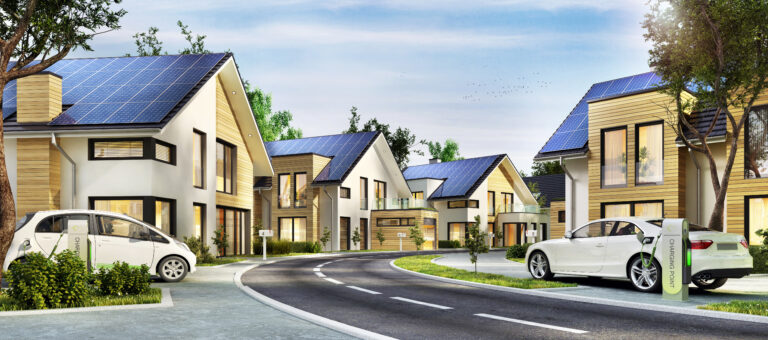Insights

October 26, 2021
Dramatic images of wildfires raging across western North America envelop the front pages of media publications, as their smoke disperses thousands of miles away to the east coast9 and dozens tragically pass away in the untethered blazes. Climate change is front of mind for many at the moment. In the first month of the 2020 fire season alone, California has seen 6 of the 20 worst wildfires in the history of the state1. The abstract concept of future climate refugees has been met with the present reality of hundreds of thousands of west-coast dwellers under evacuation orders, including over 10% of the state of Oregon’s population2. California, a state that is one of the furthest along in the transition towards clean energy, saw rolling blackouts last month for the first time since 2001, as record shattering heatwaves tested the limits of its power grid. Some critics of renewable energy are blaming the blackouts on California’s reliance on intermittent sources of power, but the energy transition is the only way to stave off the worst impacts of climate change—such as greater frequency and force of wildfires. With all eyes on California’s role at the front lines of the battle against climate change, there are important takeaways for onlookers around the world.
California currently generates about 30% of its electricity from renewable sources—primarily solar and wind. Based on a 2018 law, the state will increase renewables to 60% of power generation by 2030 and achieve economy-wide net zero carbon by 2045. Is it fair to draw a straight line from this high penetration of intermittent sources of power to the supply/demand imbalance seen during this past month’s heatwaves? The heads of California’s energy agencies, including the President of California Public Utility Commission (CPUC), President and CEO of California Independent System Operator (CAISO), and Chair of California Energy Commission (CEC), in their joint letter to California Governor Gavin Newsom unambiguously say no:
“Collectively, our organizations want to be clear about one factor that did not cause the rotating outage: California’s commitment to clean energy. Renewable energy did not cause the rotating outages. Our organizations understand the impacts wind and solar have on the grid. We have already taken many steps to integrate these resources, but we clearly need to do more. Clean energy and reliable energy are not contradictory goals.” 3
Grid operators can reliably anticipate when peak demand will be and when solar generation will drop off—the time of sunset is predictable years in advance. In a properly functioning system, rather than being forced to cut power to ratepayers, some combination of continued wind and baseload generation, energy storage, electricity imports from neighboring states, demand response, and natural gas peaker plants should facilitate meeting peak demand in the early evening. In this instance, when needed the most, two natural gas plants that were due to ramp up to almost 1 GW of capacity went unexpectedly offline5— the cause of which is still being investigated. With the heatwaves proliferating through the west, there was very little excess capacity that could be imported from neighbors, and the ongoing droughts meant less water in the reservoirs for hydro generation than CAISO expected6. Peak demand on August 14 and 15 was high but not above similar hot days in prior years3. There is no question that reliance on intermittent power sources adds another element to the calculus of continuously meeting power demand. However, given proper planning, renewables and distributed generation should enhance, rather than be a detriment to grid reliability. It is constructive that the state energy agencies publicly conveyed the message that they understand more is required of them, and that clean energy is not the culprit. More long duration storage, updated reliability rules, and improved demand response programs would be a good place for them to start.
Renewables are being installed in California at such a rapid pace often because they represent the cheapest generation capacity additions, but also because doing so is key to avoiding the worst impacts of climate change, the beginnings of which are currently being felt up and down the west coast. Over 5 million acres have now been burned2 in the worst start to a fire season on record. In August, temperatures rose to 130˚F (54˚C) in Death Valley, one of the hottest temperatures ever recorded on earth. California summers are 2.5˚F warmer than they were in the 1970s, which along with prolonged droughts also exacerbated by climate change, has led to the number of days per year with extreme wildfire risk more than doubling in the last 40 years1. Certain public figures will point to the fact that poor forest management and reckless human behavior are contributing to the wildfires. While this may be true, the role of climate change in laying the groundwork for these natural disasters must be a key focus in mitigation efforts.
California does not need to be convinced of these arguments, but while the spotlight shines both on key elements of the state’s fight against climate change and the devastating impacts of the phenomenon, the message to the rest of the world should be clear. Complexities and all, the transition towards decarbonized energy and transportation systems, the two largest sources of carbon emissions globally8, is underway and more urgent than ever.
Author: Saul Muskin, Analyst @ MacKinnon, Bennett & Company Inc.
Image: “California Wildfires” by slworking